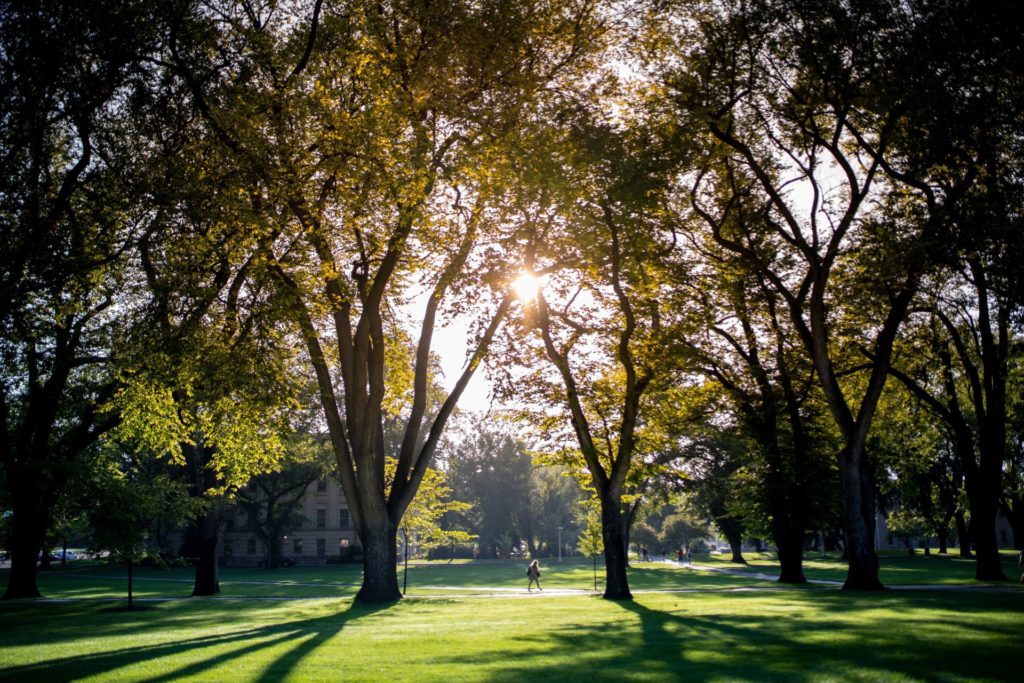

From the iconic ring of trees around the Oval to the less famous ones that dot the parking lot near the Morgan Library, Colorado State University is defined by its urban forest.
In honor of Move-in Week, here’s everything you didn’t think you needed to know about trees on the CSU campus.
And, if you want to soak in some notable trees yourself, be sure to check out the Campus Tree Tour. There’s also an opportunity to plant some of your own and continue to grow.
Enjoy these 46 facts, and be warned: Your friends will be very impressed when you repeat them at dinner parties or the brewery.
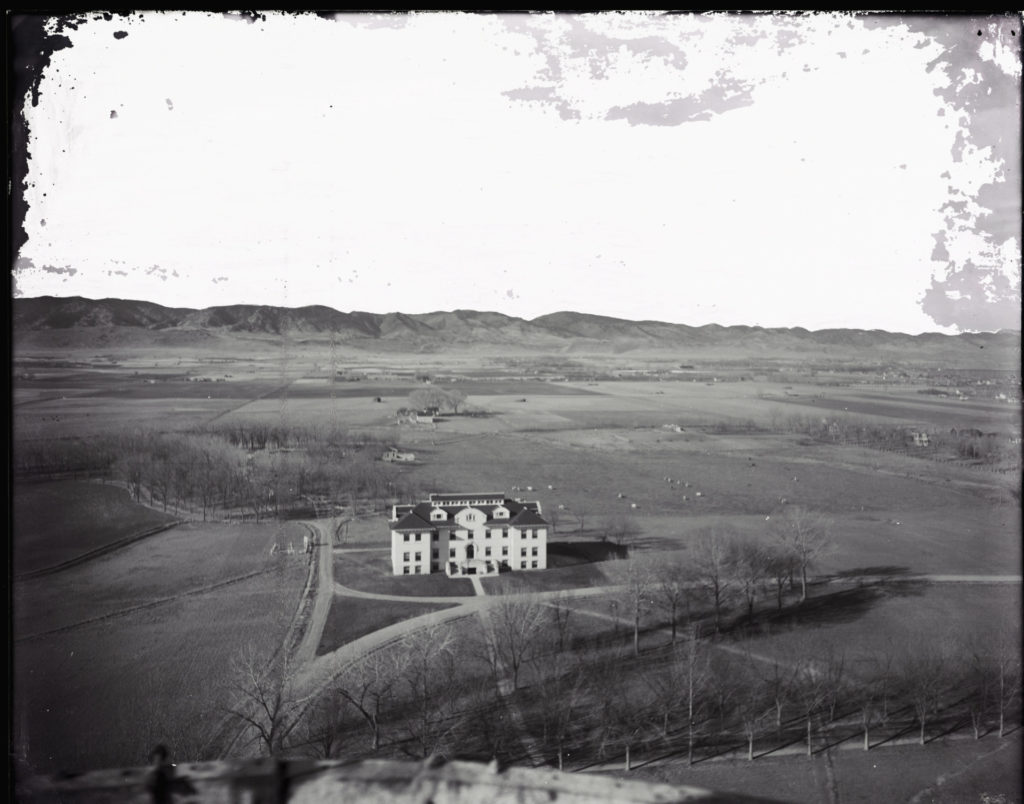
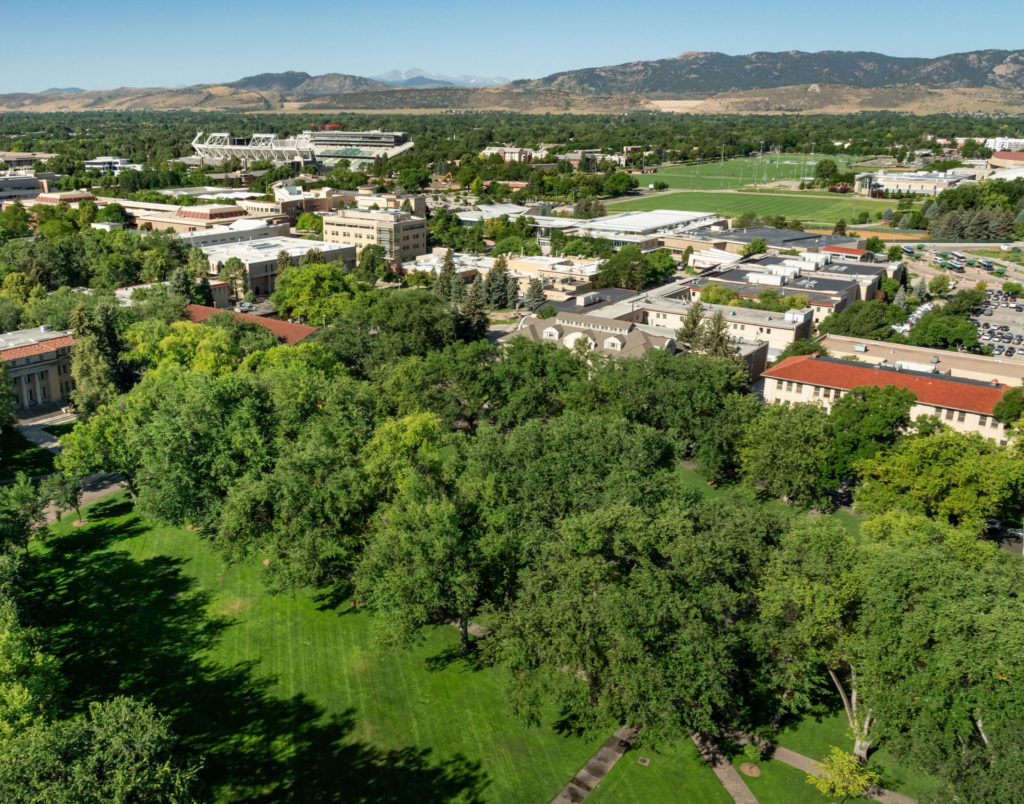
The CSU file photo on the left shows the treeless prairie that campus once sat on in the 1910s. The photo on the right shows the trees that have since been planted.
1. When CSU was first founded 1870, it was located on a treeless prairie. In the ensuing years, most trees were planted in conjunction with new buildings.
2. There are now approximately 10,000 trees distributed across CSU’s three campuses in Fort Collins.
3. That number includes 9,562 trees within 220 acres of irrigated landscape on CSU’s Main Campus.
4. As of 2020, there were 294 different species of trees at CSU.
5. The most common tree on the Main Campus is a honey locust, which accounts for 9.78% of the trees on campus. The next most common are the green ash (8.83%), blue spruce (7.15%), Rocky Mountain juniper (5.72%) and Austrian pine (5.22%).
6. The oldest tree is more than 135 years old and located near the former location of Old Main.
7. The biggest tree at CSU is 66 inches in diameter. It’s located in front of Green Hall and is a sargent cottonwood.
8. The first two rows of American elms on the CSU Oval were planted in the spring of 1881.
9. Most of the large elms that circle Oval Drive were planted in 1922 as one-inch saplings. At the time, the Oval was an alfalfa and grain field, and the grass lawn was planted in 1925.
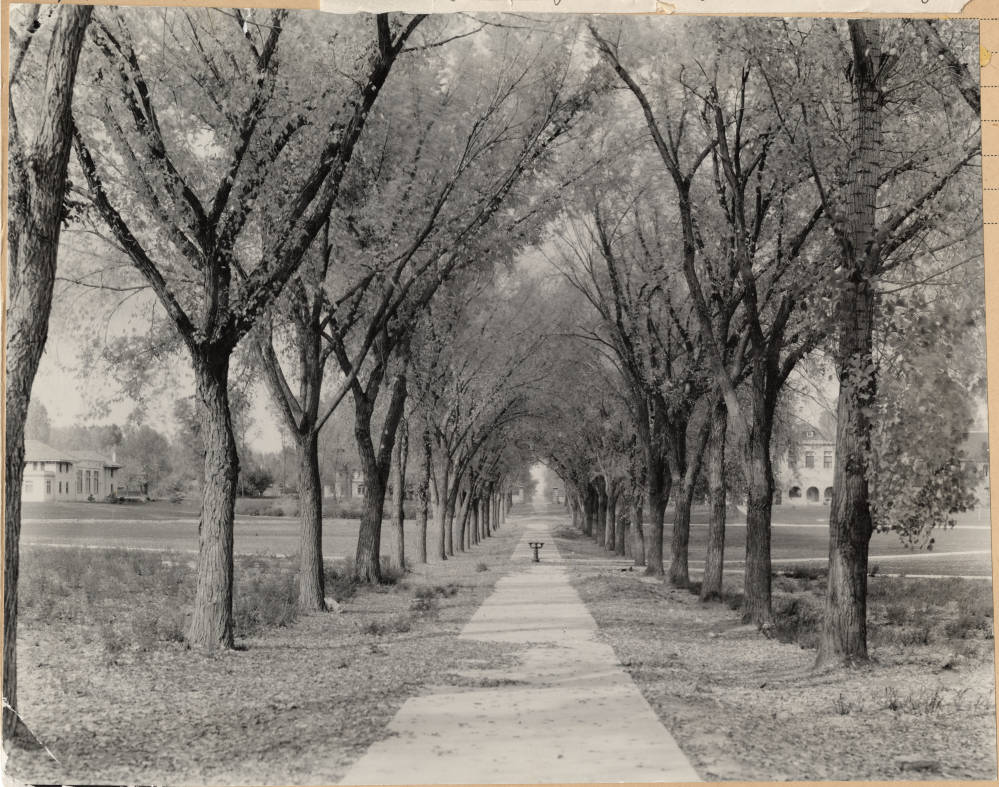
A 1925 photo of the historic Oval at CSU.
10. Some of the 1881 Oval trees survive today, but many have been replaced over the last 137 years (but are now of equal size to the originals).
11. There are now 99 elms circling the Oval and lining its walkaways, and 40 more trees are nearby.
12. Some of the trees are 80 to 90 feet high, and their roots are 1.5 times their height.
13. In the 1970s, the Oval trees became at risk for Dutch elm disease. The trees are regularly monitored for any sign of the disease, and if it’s confirmed a tree is immediately removed and isolated from adjacent trees by trenching, since Dutch Elm can spread through intertwined roots.
14. After a 1990s study found the Oval Trees to be in decline, a steering committee came together to develop a vision for the CSU landmark’s future. One camp recommended removing all the Oval trees and replanting 98 elms in their original positions, while another called for the addition of multiple species of trees in an irregular pattern to be planted over time in an effort to give the area more species and age diversity. In the end, neither vision was implemented.
15. The Oval is instead intact today due to efforts to decrease wear and tear on the area. This has meant eliminating all non-CSU events from the Oval (including Taste of Fort Collins) to manage and mitigate soil compaction, as well as barring structures from being built there.
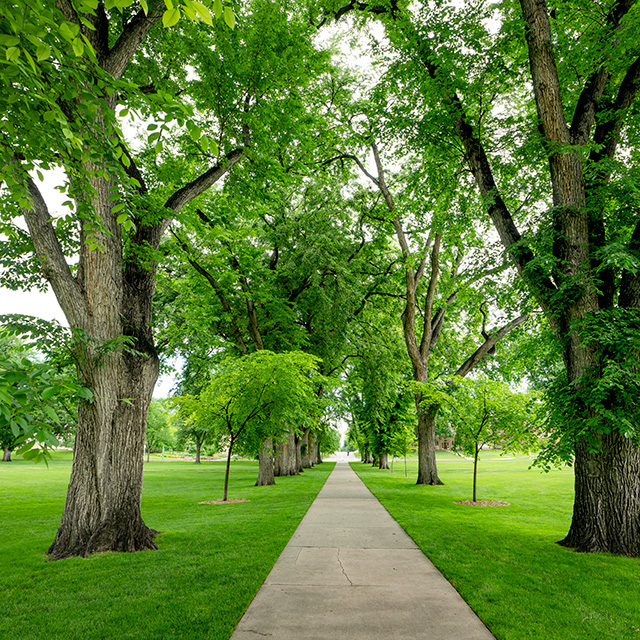
The historic trees at the center of the CSU Oval.
16. Ever wonder why there aren’t holiday lights on the Oval? It’s actually against University policy, since the extensive trenching needed to bring power to each tree would likely kill or significantly shorten their lives.
17. Nothing else can be hung from the branches of the Oval trees either.
18. It costs more than $50,000 per year to sustain the Oval trees, including $30,000 for annual insect control treatments.
19. Proceeds from the Oval Preservation Fund go toward these costs, and also helps to plant new elm trees in the event of extreme age, disease or storm damage.
20. Most trees on campus are on a three-to-five year pruning cycle, apart from the Oval, which is pruned more frequently (about every three years).
21. If a tree needs to be removed due to disease or a potential safety risk to campus, it first must undergo a risk assessment by the campus arborist, city arborist and campus landscape architect. Facilities Management has its own policy when it comes to using wood waste from tree care operations or from fallen branches. This waste is chipped on campus, and then used as high-quality mulch for other projects.
22. Sometimes, removed wood can also be milled and used for interior trim on on-campus construction and remodel projects.
23. In one case, graduates of the CSU Facilities Management Leadership Academy received plaques made out of wood from trees that had been removed from the CSU Oval.
24. CSU does not send wood to the landfill.
25. While it might seem like a cool idea, attaching slacklines to trees on the CSU Oval is not allowed. Same with locking bikes to trees or attaching swings and ropes. Learn more about the slacklining policy here.
26. The Heritage Arboretum/Woody Plant Demonstration and Research Area has the largest collection of woody plants in the region, with more than 1,100 different taxa represented.
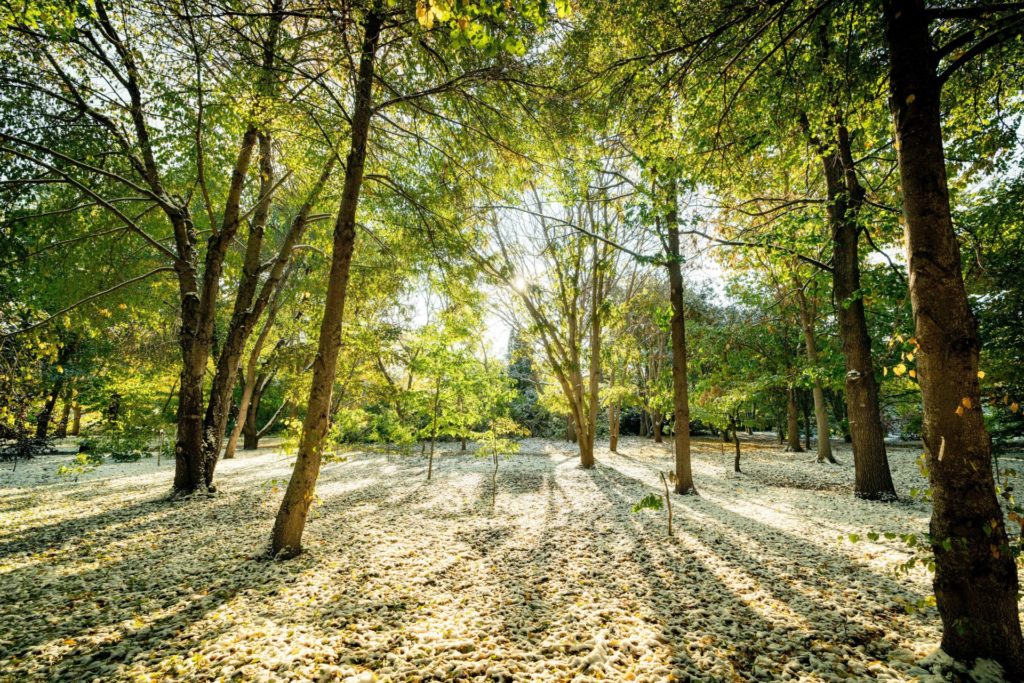
A 2019 photo of the CSU Arboretum.
27. There’s a database that actually tracks how all of these plants are doing.
28. There used to be an apple orchard along College Avenue just south of where Old Main once stood, but it was torn out in the early 1920s to make way for the College Gymnasium.
29. Approximately 3,000 trees were planted on the CSU campus in 1881, including a row of hackberry trees just east of Spruce Hall. Two of those remain today, and are registered with the Colorado State Forest Service as the third and fourth largest hackberry trees in the state.
30. Before 1892, University curved northward to meet Elizabeth Street, but the road was rerouted to its current location due to construction – and that explains the unusual location of several of the trees that are still there and follow the path of this original byway.
31. Then-State Forester Russell E. Ford planted a grove of trees just south of the new Forestry building in the late 1940s. He said these trees were “for the future,” and the area is now known as the “Sherwood Forest.”
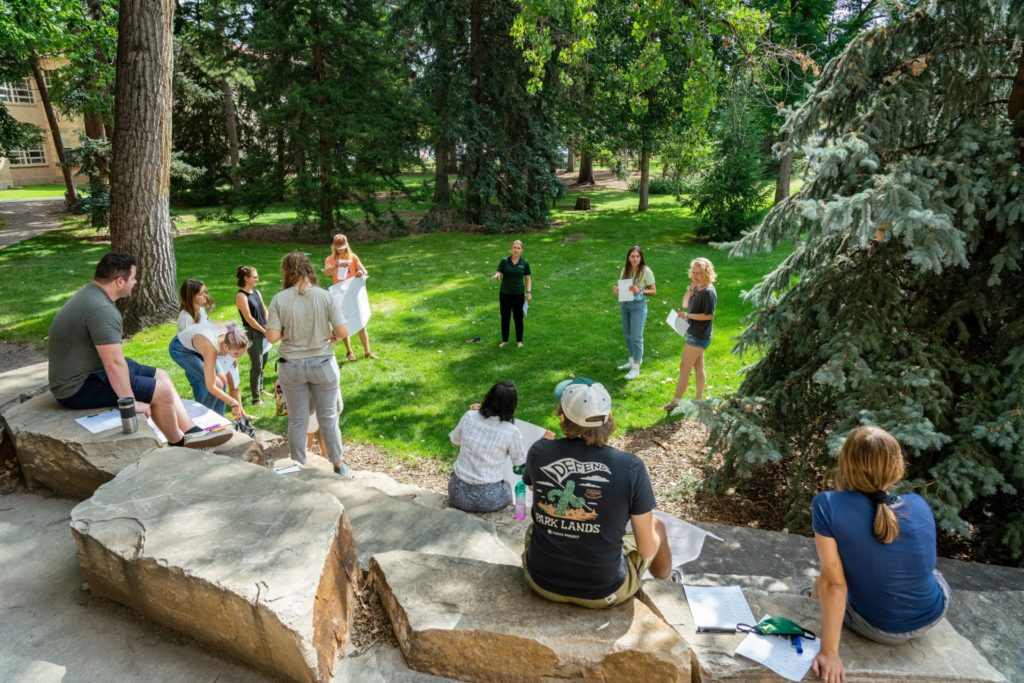
Students outside of what’s known as the Sherwood Forest.
32. Concerns about the Emerald Ash Borer arriving on the CSU campus has led the University to stop planting new ash trees and reduce the percentage of this species on campus. Larger and more valuable ash trees are now treated with a trunk injection of insecticide every two to three years.
33. CSU is home to multiple Colorado state champion trees. What does this mean, you ask? A champion tree is defined as one that exceeds all others in the state in a combination of height, trunk circumference and canopy spread.
34. The most notable state champion tree at CSU is a 117-foot tall rock elm ulmus thomasii that’s just north of Routt Hall on the Laurel Street parkway. It’s the fifth tree from the corner of College and Laurel.
35. You can’t buy this type of rock elm today: It’s not available in the landscape trade.
36. To celebrate CSU’s 150th anniversary, a small but mighty team of CSU Outdoor Services employees planted 170 trees (it was supposed to be 150, but they were overachievers) on CSU’s campus amid the COVID-19 pandemic in April 2020.
37. The 150th of those trees is just outside of Spruce Hall.
38. As of April 2022, CSU is one of only 34 arboreta in the world to have accreditation as a Level III arboretum.
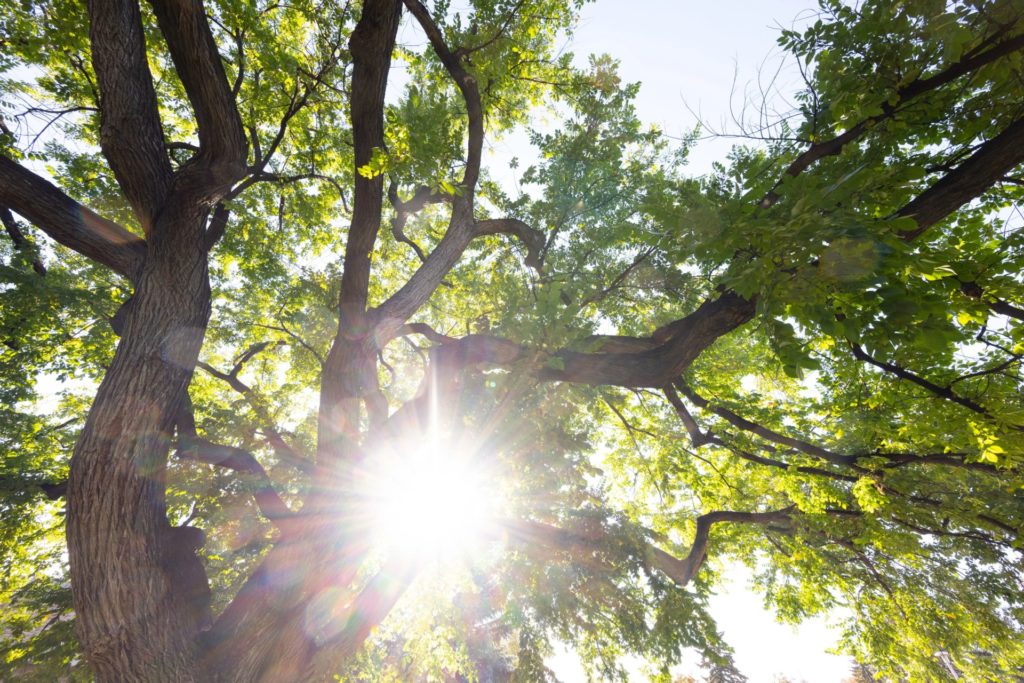
The large tree outside the Wagar building.
39. If you find yourself near the northwest corner of the Natural Resource Research Lab, stop to appreciate the American elm that’s planted there. It’s 90 years old and is nicknamed the “octopus tree”because its canopy is twice as wide as its height (110-by-50-feet).
40. Facilities Management actually uses a GIS app to track the locations and types of all the trees on campus. It’s accurate within 10-15 feet and helps the campus arborists do their jobs.
41. Colorado’s state tree is the blue spruce, and there are approximately 680 of them planted across CSU’s three campuses in Fort Collins.
42. Nine of those are outside the Lory Student Center, which were donated by the CSU class of 1910 and planted in 1964 as a living memorial.
43. CSU’s building boom has been a boon for trees. A minimum of two trees are replanted for every tree that has been removed, and this has resulted in a 10% increase in the total number of trees on the main campus.
44. Does this story make you want your own tree? The Colorado State Forest Service Nursery on the Foothills Campus of CSU is the state’s leader in producing low-cost, Colorado-grown seedling trees and shrubs for conservation purposes. Those can be given to landowners to help with everything from wildfire restoration to erosion control.
45. For the 11th straight year, CSU has been honored as a Tree Campus Higher Education Institution. This designation from the Arbor Day Foundation recognizes CSU’s efforts to protect and maintain its impressive urban forest.
46. Why does this urban forest matter? Science has shown that trees clean our air and water, help manage stormwater runoff, prevent soil erosion, provide habitat, sequester and store carbon, reduce noise pollution, and cool buildings and walkways with their shade.
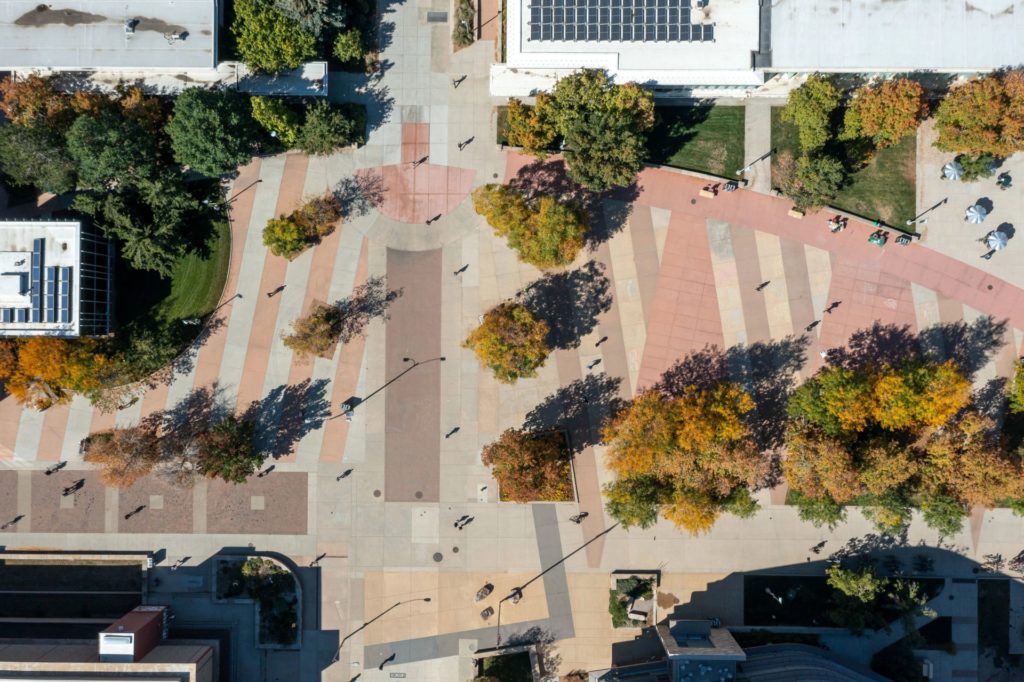
An aerial shot of trees on the CSU Plaza.